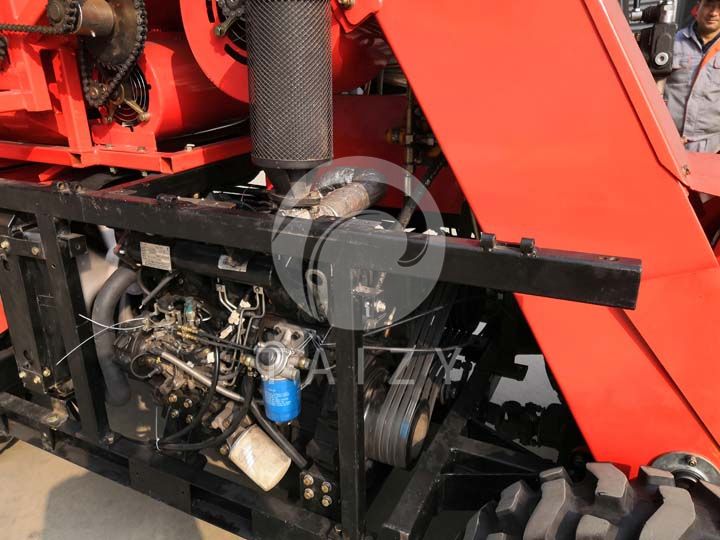Corn is an important food product in the world, and mechanized operations have significantly improved the efficiency of corn production. In recent years, corn harvesters have been welcomed by farmers around the world. It can efficiently pick ears and smash stalks of mature corn. As a complex agricultural machinery, corn harvester is necessary and reasonable to use and maintain. This can not only ensure the efficiency and economic benefits of the grain harvesting process, but also help reduce the failure rate. It can also increase the service life of the corn harvester during operation. It is a reliable guarantee for the smooth progress of corn harvesting.
Structure and working principle of corn harvester
The basic structure of the corn harvester includes cutting head, conveying device, peeling device, grain silo, and straw returning device. As well as a large number of hydraulic equipment, sensors, and transmission structures.
When the corn harvester is working, the gap between the aerator on the cutting head alignes with the corn planting line. And the cutting head guids the corn straw into the inside it. Through the rotation of the ear picking roller, the straw is pulled down. So the ear picking operation is realized at the corn fruit growing node. Generally, the structure of the picking roller has three stages, guiding section, picking section, and pulling stem section. They realize the functions of guiding, ear picking and pulling stem. The removed corn ears are transported to the peeling device, peeling operation is performed under the operation of the peeling roller. Finally stored in the grain silo. The returning knife box crushes the corn stalks on the rear and scatters on the field to facilitate the returning operation.
Usage of corn harvester machine
Before using the corn harvester, you must check the reliability of the machine. Then adjust to ensure the harvest quality and work efficiency. First, you should adjust the height of the header appropriately according to the growth characteristics of the corn plant. This is to ensure the reliability of the ear picking operation. At the same time, you should adjust the gap between the picking rollers according to the planting density of corn and the thickness of the straw.
When the planting density is large and the diameter of the straw is large, the gap between the picking rollers can be appropriately increased. The maximum adjustment of the gap is usually not greater than 12 mm. When the planting density is small or the straw is thin, the gap can be appropriately reduced. And the minimum gap is not less than 8 mm. Too large gaps may lead to increased grain loss of ears of corn. Too small gaps may easily lead to clogging of the picking rollers, affecting the efficiency of ear picking.


